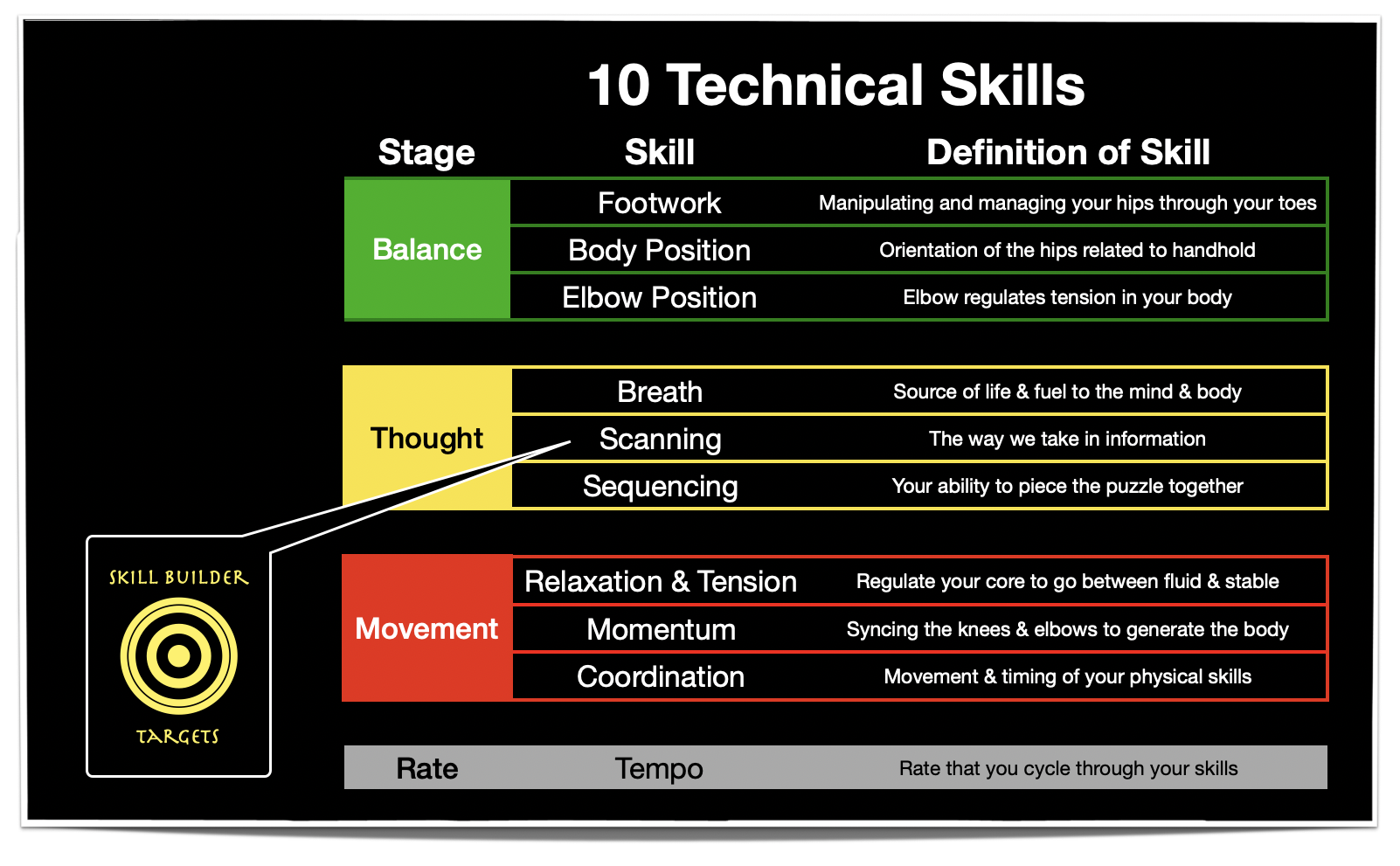Look with Curious Confidence
Scanning
==>
Scanning ==>
Primary Information for How & Why
To effectively embark on this skill builder, there are a few key pieces of essential information you need to know. These primary details will guide you in learning & performing the skill correctly and maximizing the benefits of your practice.
-
When your gaze is softened you see more in your peripheral view which results in less head movements.
Success = Description of what good looks like for this skill.
-
We have a limited amount of intensity and we think more creatively and make better observations when we are not under constant stress & strain.
Why = Broad explanation of why this skill is important.
-
1) First find an example of something you look at with curiosity. Next mimic that look as a reference point.
2) This is a look that can or should take place when you are in the “Thought” stage of the technique cycle.
3) When we are in this mindset we are open to see the problem and discover possible solutions.
4) The crux can be the ability to toggle between your mindsets at the right moment.
Directions = Written guidance for the skill.
Essential knowledge to be Effective
To embark on any skill builder successfully, it is crucial to have a strong foundation of essential information. This knowledge will ensure that you perform the skill appropriately to maximize the benefits of your practice. This section will provide you with the necessary depth to best perform this skill builder.
-
1) First identify your look of curiosity on the ground.
2) Practice previewing climbs in the “Focused & Engaged” range with a look of curiosity.
3) On climbs in the “Easy” range experience it twice in 16 feet.
4) Attempt to have at least one curious experience on a “Focused & Engaged” climb. After your attempt reflect on the quality of your curious look and repeat the climb and see if you can do better.
5) Practice this on climbs in the “Problem Solving” range with the same strategy as Step 4.
Progressions = Listing of the progressions for this skill.
-
At home practice finding this look in the mirror. Think about the optimal way to explore looking for the next hand. First with low stress then higher levels of strain.
Tips = There might be suggestions on how best to practice & integrate the skill.
References for this exercise
The references below provide clarity by explaining the key terms in a concise manner.
-
Edit the time field to reflect the total estimated time you spent practicing this skill.
Record = What and how to record relevant data to track any changes.
-
Blank
Definitions = Explanation of a term.

